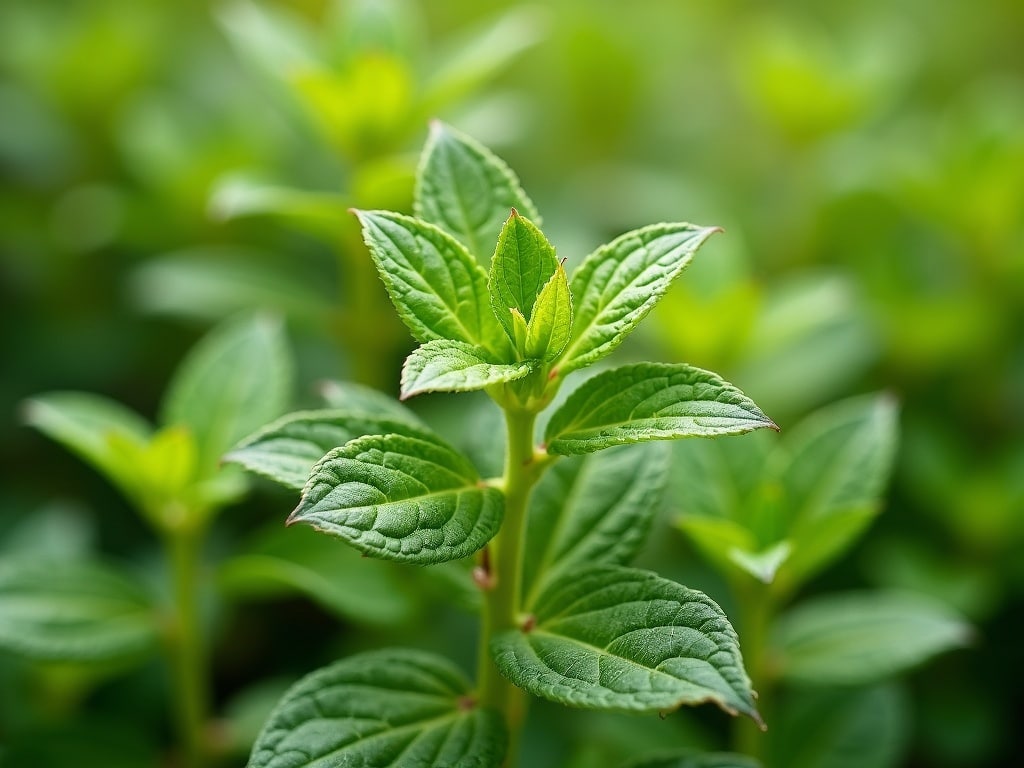Growing Oregano from Seed: A Comprehensive Guide
Imagine the sun-drenched hills of the Mediterranean, the air thick with the peppery fragrance of oregano. Now, picture that same vibrant flavor and aroma emanating from your very own garden. Growing oregano from seed is a surprisingly simple and rewarding endeavor, opening the door to a world of culinary possibilities and natural wellness. This comprehensive guide will walk you through every step, from selecting the right seeds to harvesting your first fragrant leaves. So, ditch the dried oregano in the spice rack and get ready to cultivate your own flourishing patch of this versatile herb.
Why Grow Oregano from Seed?
While you can certainly purchase oregano starts from a nursery, there are several compelling reasons to choose the seed route:
- Cost-Effective: A packet of oregano seeds is significantly cheaper than buying multiple established plants.
- Wider Variety Selection: Seed catalogs often offer a broader range of oregano varieties than you'll find at your local garden center, from the classic Greek oregano to the spicier Mexican oregano and the subtly different Italian oregano.
- Greater Control: Starting from seed allows you to control the entire growing process, ensuring your oregano is raised organically and free from unwanted chemicals.
- Sense of Accomplishment: There's a unique satisfaction that comes from nurturing a plant from the very beginning, watching it sprout, grow, and eventually grace your table with its flavor.
Understanding Oregano Varieties
Before you even think about planting, it's crucial to understand that oregano isn't a single, monolithic herb. There's a diverse range of species and cultivars, each with its own unique flavor profile and growing characteristics. Here are a few popular options:
- Greek Oregano (Origanum vulgare hirtum): This is the quintessential oregano, known for its strong, pungent flavor and fuzzy leaves. It's a must-have for classic Mediterranean dishes.
- Italian Oregano (Origanum x majoricum): A close relative of Greek oregano, Italian oregano has a milder, slightly sweeter flavor. It's a great all-purpose oregano for everyday cooking.
- Mexican Oregano (Lippia graveolens): Technically not a true oregano, Mexican oregano belongs to a different plant family. However, it boasts a similar flavor profile with a noticeable citrusy undertone and a more robust, slightly peppery kick. It's essential for authentic Mexican cuisine.
- Golden Oregano (Origanum vulgare ‘Aureum'): Prized for its vibrant golden foliage, this oregano variety adds a splash of color to the garden. Its flavor is milder than Greek oregano, making it suitable for more delicate dishes.
- Creeping Oregano (Origanum vulgare prostratum): This low-growing variety is perfect for ground cover or spilling over the edges of containers. It has a mild, slightly minty flavor.
Consider your culinary preferences and growing conditions when selecting your oregano variety. Greek oregano thrives in hot, sunny locations, while golden oregano prefers partial shade to prevent its leaves from scorching.
Gathering Your Supplies
To successfully grow oregano from seed, you'll need to gather a few essential supplies:
- Oregano Seeds: Purchase high-quality seeds from a reputable source. Look for seeds that are specifically labeled for culinary use.
- Seed Starting Trays or Pots: Choose trays or pots with drainage holes to prevent waterlogging.
- Seed Starting Mix: This lightweight, sterile mix provides the ideal environment for germination. Avoid using garden soil, as it can be too heavy and may contain pathogens.
- Spray Bottle: A spray bottle is essential for gently watering the seeds without disturbing them.
- Heat Mat (Optional): A heat mat can significantly speed up germination, especially in cooler climates.
- Grow Lights (Optional): If you're starting your seeds indoors, grow lights will provide the necessary light for healthy seedling development.
- Small Pots for Transplanting: Once your seedlings are large enough, you'll need to transplant them into individual pots.
- Well-Draining Potting Mix: Use a high-quality potting mix designed for herbs when transplanting.
Starting Oregano Seeds Indoors
Starting oregano seeds indoors gives you a head start on the growing season, especially if you live in a region with a short summer. Here's a step-by-step guide:
- Sow the Seeds: Fill your seed starting trays or pots with seed starting mix. Gently press the soil down to create a firm surface. Sprinkle the oregano seeds evenly over the surface of the soil. Oregano seeds are very small, so don't overcrowd them. There is no need to cover the seeds with soil, as they need light to germinate.
- Water Gently: Use a spray bottle to mist the soil thoroughly. Be careful not to overwater, as this can lead to damping-off, a fungal disease that can kill seedlings.
- Provide Warmth: Place the seed starting trays or pots on a heat mat, if using. Otherwise, find a warm location in your home, such as near a radiator or sunny window. The ideal soil temperature for oregano seed germination is between 70°F and 80°F (21°C and 27°C).
- Provide Light: If you're starting your seeds indoors, place them under grow lights. Position the lights a few inches above the soil surface and keep them on for 14-16 hours per day. If you don't have grow lights, place the trays or pots in a sunny window, but be aware that the seedlings may become leggy (tall and spindly) if they don't receive enough light.
- Maintain Moisture: Keep the soil consistently moist, but not soggy. Check the soil moisture level daily and mist with a spray bottle as needed.
- Be Patient: Oregano seeds typically germinate in 7-14 days. Once the seedlings emerge, remove them from the heat mat and continue to provide them with plenty of light and moisture.
Direct Sowing Oregano Seeds Outdoors
If you live in a region with a long growing season, you can direct sow oregano seeds outdoors. However, this method is generally less reliable than starting seeds indoors, as the seeds are more vulnerable to pests, diseases, and unfavorable weather conditions.
- Prepare the Soil: Choose a sunny location with well-draining soil. Amend the soil with compost or other organic matter to improve its fertility and drainage.
- Sow the Seeds: Sprinkle the oregano seeds evenly over the surface of the soil. Gently press the seeds into the soil, but don't cover them with soil.
- Water Gently: Use a watering can with a fine rose to gently water the seeds. Be careful not to wash the seeds away.
- Keep Moist: Keep the soil consistently moist until the seedlings emerge.
- Thin Seedlings: Once the seedlings are a few inches tall, thin them to allow for proper spacing. Space the plants 8-12 inches apart.
Transplanting Oregano Seedlings
Once your oregano seedlings have developed a few sets of true leaves (the leaves that resemble the mature oregano leaves), they're ready to be transplanted into individual pots or directly into the garden.
- Harden Off Seedlings: Before transplanting your seedlings outdoors, you'll need to harden them off. This process gradually acclimates the seedlings to outdoor conditions, preventing them from going into shock. Start by placing the seedlings outdoors in a sheltered location for a few hours each day, gradually increasing the amount of time they spend outside. After a week or two, they should be ready to be transplanted.
- Choose a Location: Select a sunny location with well-draining soil. Oregano thrives in full sun, but it can tolerate partial shade.
- Prepare the Soil: Amend the soil with compost or other organic matter to improve its fertility and drainage.
- Transplant Seedlings: Gently remove the seedlings from their pots or trays. Plant them in the ground or in individual pots, spacing them 8-12 inches apart.
- Water Thoroughly: Water the seedlings thoroughly after transplanting.

Caring for Your Oregano Plants
Once your oregano plants are established, they're relatively easy to care for. Here are a few key tips:
- Watering: Water your oregano plants regularly, especially during dry weather. Allow the soil to dry out slightly between waterings to prevent root rot.
- Fertilizing: Oregano doesn't require heavy fertilization. However, you can apply a light feeding of compost tea or diluted fish emulsion every few weeks to promote healthy growth.
- Pruning: Prune your oregano plants regularly to encourage bushier growth and prevent them from becoming leggy. Pinch back the tips of the stems to promote branching.
- Weeding: Keep the area around your oregano plants free of weeds. Weeds can compete with the oregano for nutrients and water.
- Pest and Disease Control: Oregano is generally resistant to pests and diseases. However, it can occasionally be affected by aphids, spider mites, or fungal diseases. If you notice any problems, treat them promptly with an appropriate organic pesticide or fungicide.
Harvesting Oregano
You can begin harvesting oregano leaves as soon as the plants are about 6 inches tall. The flavor of oregano is most intense just before the plant flowers.
- Harvesting Technique: To harvest oregano, simply snip off the stems with scissors or pruning shears. You can harvest individual leaves as needed, or you can harvest entire stems.
- Drying Oregano: To dry oregano, tie the stems together in small bundles and hang them upside down in a cool, dry, and well-ventilated place. Alternatively, you can dry the leaves in a dehydrator or oven.
- Storing Oregano: Store dried oregano in an airtight container in a cool, dark place. Dried oregano will retain its flavor for up to a year.
Troubleshooting Common Problems
Even with the best care, you may encounter some problems when growing oregano from seed. Here are a few common issues and how to address them:
- Poor Germination: If your oregano seeds aren't germinating, make sure the soil is warm and moist. You may also need to provide more light.
- Leggy Seedlings: Leggy seedlings are a sign that they're not getting enough light. Move them closer to the grow lights or place them in a sunnier window.
- Damping-Off: Damping-off is a fungal disease that can kill seedlings. To prevent damping-off, use a sterile seed starting mix and avoid overwatering.
- Yellowing Leaves: Yellowing leaves can be a sign of nutrient deficiency. Apply a light feeding of compost tea or diluted fish emulsion.
- Pests and Diseases: If you notice any pests or diseases, treat them promptly with an appropriate organic pesticide or fungicide.
Culinary Uses for Fresh Oregano
Fresh oregano is a culinary powerhouse, adding its pungent, aromatic flavor to a wide variety of dishes.
- Mediterranean Cuisine: Oregano is a staple in Greek, Italian, and other Mediterranean cuisines. It's used to flavor pizzas, pastas, salads, grilled meats, and vegetables.
- Mexican Cuisine: Mexican oregano is essential for authentic Mexican dishes such as chili, tacos, and enchiladas.
- Soups and Stews: Oregano adds depth and complexity to soups and stews.
- Herb Blends: Oregano is a key ingredient in many herb blends, such as Italian seasoning and Herbs de Provence.
- Infused Oils and Vinegars: Infuse olive oil or vinegar with fresh oregano for a flavorful condiment.
Growing oregano from seed is a simple yet immensely rewarding experience. With a little patience and care, you can cultivate a thriving patch of this versatile herb, bringing the taste and aroma of the Mediterranean to your own kitchen. So, embrace the journey, experiment with different varieties, and savor the delicious rewards of your homegrown oregano.

